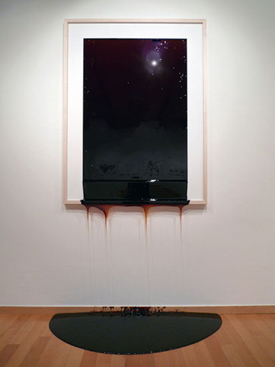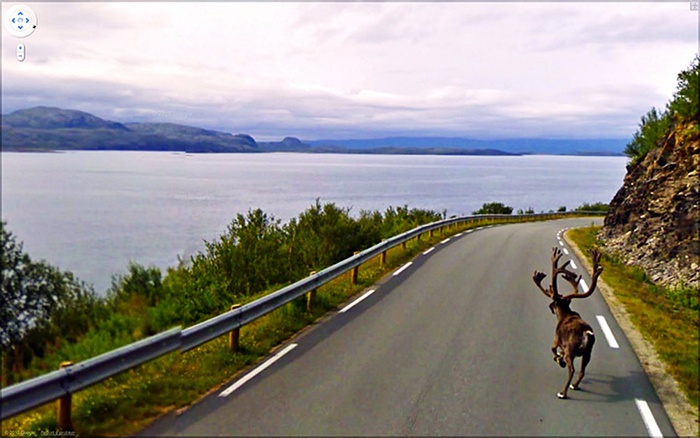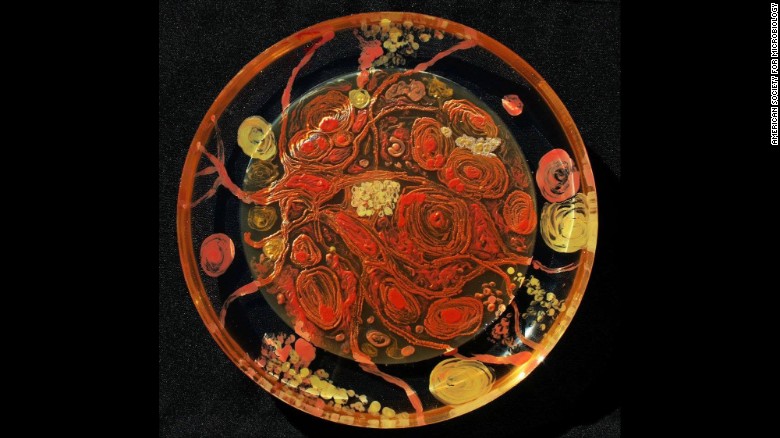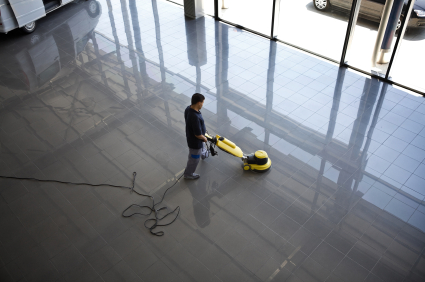Art News and Updates from Gallereo
All the latest news from the art world, as well as what's happening here at Gallereo. If you've built a gallery at Gallereo, let us know about your experience and you and your site could feature in our blog in the coming weeks.
Friday 20th November 2015The Newest Art Movement You've Never Heard Of
Art movements are a difficult thing to pin down. When they're new and exciting, almost nobody has ever heard of them, but that's also when they tend to be the most disruptive. That's disruptive in the sense of 'challenging the status quo' rather than something negative, in the sense that a disruptive technology succeeds by solving a problem more effectively than the existing methods do. So it's always an interesting thing to see an art movement taking shape, to watch it's progress from nascent idea to full-fledged movement - for, as is more often the case, they tend to wind up slinking back to the art school dorm room never to see the light of day again.
This latest emerging movement is known as Excessivism, and it is truly a millennial movement in all senses of the word. Formally the brainchild of contemporary American artist Kaloust Guedel, it styles itself a commentary on the rampant excesses of commercialism and materialism that permeates American culture, which is admittedly not exactly a new idea. It has a manifesto, as any good art movement would, as well as a slew of artists who are already working in the style.
Easily the most recognizable name on the list is Ai Weiwei, it's not immediately apparent if he has agreed to be part of this movement or if he's even aware of its existence. It would certainly be a great help to the aesthetic credibility of the movement, but at the same time it's somehow a bit damaging to include an established artist in a new movement they didn't found.
The manifesto starts out in a typically dense fashion: "Excessive use of resources in magnified state, by which one expresses: by means of two, or three dimensional visual-creations, written, or pronounce words, or in any other manner. As a reflection, examination, or investigation of the capitalist system, exempt of aesthetical, legal, commercial, ethical, or moral considerations."
Whether or not it's intended ironically or not, the density of the language is excessive in and of itself. The pieces, however, vary widely in terms of their general aesthetic appeal. Some are quite beautiful in their own way, and some are merely messy to the point of repulsiveness. To read the full manifesto and see the full list of artists who are working in the style, be sure to check out the website at excessivism.com.
Posted on November 20th 2015 on 03:50am
0 Comments
Wednesday 18th November 2015Art for the Blind
3D printing is everywhere in the art world lately, from generating new sculptural techniques to enabling entirely new forms of abstract expressionism, but thanks to a new initiative it's breaking even more new ground. If you've been living under a rock lately, 3D printing is the latest wave of homebrew fabrication technology that allows users to generate 3D models using special software and a printer that uses plastic and resin compounds instead of ink. It gradually builds up the surface layer by layer, allowing for an incredible amount of detail in its constructions. The technology has been around for a few years now, and although it still has to break its way into the mainstream, it's gaining a lot of buzz as the machinery becomes more and more affordable. As the userbase grows, so do the number of artists using it in their work, and new applications are being developed every day.
The latest buzz surrounds a project named 3DPhotoWorks with an ambitious goal: to bring visual art to the blind. In the past the idea may have seemed like a tastelessly cruel joke, but thanks to 3D printing technology, 3DPhotoWorks has been captivating the blind with 3D printings of famous paintings and other traditionally two dimensional work. As it says on their website, "3DPhotoWorks has devoted 7 years to developing a process that allows Blind people to “see” art and photography. Our goal is to make the world’s greatest art and greatest photography available to this deserving audience at every museum, every science center and every cultural institution, first in this country, and then beyond." They're referring to the United States, but as the buzz grows, expect to see more and more museums and galleries around the world show and interest in the work.
Just recently there was an exhibition in Seattle, Washington, put on courtesy of the National Federation for the Blind of Washington, which featured 3D models of The Mona Lisa by Leonardo Da Vinci, The Portrait of Dr. Gachet by Vincent Van Gogh, and a 3D printed map of Washington state. Interestingly enough, the map was just as popular as the other two items despite its more prosaic nature, due to the fact that topography is more of a notional concept to the blind. Actually being able to feel a map and all the spatial relationships it contains is just as (if not more) interesting as some of the greatest works of art!
Posted on November 18th 2015 on 09:44pm
0 Comments
Friday 13th November 2015Shazam the Art World

Smartphones are here to save us from ignorance. Not just so that you can win that argument at the pub about how large salmon can grow, but for more seriously intellectual queries as well. Music lovers frustrated by overhearing a song but not knowing it have long relied on the popular application 'Shazam' (among others) which uses the smartphone microphone to 'listen' to the music being played and match it against a database, providing artist and track information alongside a handy purchase link. At long last the visual art world will be entering the same modern age thanks to a new application known as 'Artbit'.
The brainchild of an Israeli app development company of the same name, Artbit hopes to revolutionize the way people interact with art by taking advantage of something that is known as 'augmented reality'. Think along the lines of the audio recordings you can get for major museum tours, but completely based on your smartphone and being constantly updated. Information from the real world is analyzed and augmented with an off-site database of additional information. In the case of Artbit, users simply snap a photo of the piece in question using the camera in their mobile phone, and Artbit takes the photo and matches it against a database of artwork.
Ofer Atir, the CEO of Artbit, explained his hopes and dreams for the app to Haaretz: “I believe people want to be consumers of art, but that it seems like a scary, inaccessible world to them. We want to take the reasonable person and tell him that art is an amazing thing. We also want to connect those who haven’t got a clue about art but who up to now haven’t felt comfortable asking so they don’t appear ignorant. Instead of asking who painted something, he takes a photograph of it and the app provides a layered reality for it. The database of art is due to fill out with the help of users who take photos and ask for explanations about it, which the company’s staff will locate and provide.”
That last point is one of the most crucial, however. Any augmented reality app is only as good as the database it draws on, so adoption might be a bit slower than he hopes. The addition of a Wikipedia-style database that other users can add to should dramatically speed up the rate at which the apps useful increases, but early adoption is always crucial for the success of these types of apps. Here's hoping they make a go of it, there's nothing more frustrating than seeing a stunning piece of work and not being able to learn more about it!
Posted on November 13th 2015 on 08:11pm
0 Comments
Wednesday 11th November 2015Artist Spotlight: Jon Rafman
Virtual worlds are everywhere these days. Well, technically speaking, they're nowhere in real space as they're virtual, but the impact they have on our real lives is anything but virtual. From Street View to Second Life to Facebook, virtual worlds shape our social interactions and real world decision-making on a daily basis. While they masquerade as games or tools, the impact they have on our perceptions of both the world and ourselves are at the same time both staggering and yet often opaque to us in daily life. That is the juxtaposition that Canadian-born artist Jon Rafman explores in his work, which has hung in some of the most prestigious galleries, including London's Saatchi Gallery.
The exhibit he is probably best known for is an unexpectedly engaging yet slightly controversial one, entitled 'The Nine Eyes of Google Street View', which also happens to be the one that was featured at the Saatchi Gallery. An exploration of the world through the eyes of Google Street View, it was a remarkable exhibit that pushed some of the boundaries of our own perceptions of art by using "found photography". For those of you who are unaware, Google Street View is a feature of their popular Maps software that allows users to traverse a virtual version of the world. This was made possible thanks to an astonishingly ambitious mapping project, wherein a number of cars with 9 cameras mounted on their roofs traversed every single street in most major cities in the West (this also provided the name for the exhibition).
"The work is connected to the history of street photography but also to the 20th-century ready-made movement. So leaving those artefacts in the image is extremely important. In the bottom-left corner of each picture is a link that says, 'Report a problem'. Maybe in the middle ages you passed somebody in trouble on the road and were confronted with the moral dilemma of whether to help them. Then came a time when you could call the police. Now we've reached the point where it's a hyperlink. That represents just how alienated we've become from reality," Rafman explains.
Fortunately for Rafman in this all too litigious world, Google has a standing policy of not legally pursuing anyone who uses their photographs for artistic purposes. To see more of his work, visit his website at http://jonrafman.com/ .
Posted on November 11th 2015 on 08:17pm
0 Comments
Wednesday 04th November 2015Copyrights and Art
Copyright is one of the stickiest parts of the creative arts. It causes more problems and lawsuits than anything else, and with good reason. Nothing is more frustrating that pouring your heart and soul into a piece only to have someone show up out of the blue and steal the whole thing, lock stock and barrel. Think about Richard Price's use of others Instagram photos to make hundreds of thousands of dollars, for just one example. With that in mind, copyright is one of the most valuable things we own, but like many legal powers, it can be both a blessing and a curse.
In a rather shockingly ironic display of legal zealousness, the estate of George Orwell, world-famous author of the novel 1984 (among many others) has attempted to assert a copyright claim over the number '1984'. Stop and let that sink in for a second. The irony is palpable, especially when you consider that the supposed infraction was a t-shirt design that bore the slogan '1984 is already here'. The claim is that this is a quote from the book, but clearly it is not. "This is blatant abuse of the copyright system and more off it’s a ridiculous attempt to control something that needs no control," said Josh Hadley, the creator of the shirts and the defendant named in the lawsuit.
The implications are huge, of course. While this particular case is in regards to a string of characters from a novel, if a precedent was established that this kind of usage constitutes infringement, the entire art world could be affected. Imagine that you're working on an abstract painting, and you're using a palette of monochromatic reds. You manage to mix up a bright red that you absolutely love, and use it throughout the piece, only to find out later that you've managed to reproduce the famous red from the world's most iconic soft drink. Suddenly, you can't sell prints of the piece anymore because it violates their copyright on that particular colour!
This is an extreme example, of course, but it still highlights the potential dangers of an overzealous copyright protection system. It should be used to protect real abuses of copyrighted material, not simply those who can afford an incredible number of lawyers and their fees.
Posted on November 04th 2015 on 11:10pm
0 Comments
Monday 02nd November 2015Bacterial Art
We seem to have something of a fascination with unconventional media in the art world. Whether it's because we're driven by a conceptual desire for reimagining the way we see art or simply because we like to be unconventional for its own sake is up for debate, as many artists are rebels and rabble-rousers from day one (thankfully!). As it turns out, artists aren't the only ones with this drive.
The relationship between science and art has always been somewhat tense, with active proponents of both the differences and the similarities between the two, but recently scientists held a first of its kind art contest that around some curiosity throughout the art world. Dubbed somewhat unimaginatively the 'Agar Art Project', it featured projects that were entirely created with bacteria to create their forms.
The contest itself was named after the growth medium used to culture the bacteria. Agar is a clear, glutinous substance that provides all the nutrients that the bacteria need to grow. Petri dishes are filled with the stuff, and various bacterial cultures are introduced and allowed to grow and propagate. The control of exactly where they grow varies, but given the typical growth patterns of each species, it's possible to create some rather amazing imagery. To cap it all, the entire thing is then sealed in resin to preserve it from any kind of degradation.
"All the scientists that I work with, all agree that there is a sense of aesthetics in our work and how we present our work. It is difficult to do and appreciate without art," said Mehmet Berkmen of New England Biolabs, a research firm located in the United States. He should know, considering that his collaborative piece with artist Maria Penil entitled 'Neurons' won first prize in the competition as voted by a panel of judges, and another of their collaborative entries won the people's choice section of the contest by receiving the highest number of 'Likes' and shares on Facebook.
While they do a huge amount to popularize science, many in the art community were quick to point out that it wasn't really "art" in the high-brow, high-minded sense of the word, but rather some pretty images. Such arguments tend to come off as snobby and downright rude, but there is something to what they say. Yes, it's an interesting medium to work in, and yes it has some social value if it causes people to re-examine their perceptions of science, but at the end of the day its conceptual value (and some would say its aesthetic value) is somewhat thin.
Posted on November 02nd 2015 on 07:22pm
0 Comments
Tuesday 27th October 2015Political Satire Installation Accidentally Thrown Away
All is not quite right in the halls of the Museion modern art gallery in Bolzano, Italy. Only the artist behind the piece in question will know exactly for sure, but perhaps even that might not save the installation, because it was accidentally gathered up by cleaning staff and meticulously and carefully cleaned away. When you stop and hear the story, however, it begins to take on a surreal, ironic hilarity all of its own that might actually make it a better piece than it was originally - if the Milanese artist duo Goldschmied & Chiari can capitalize on the opportunity instead of being caught up in anger.
There had been an opening the previous night, and as most of you who've been to your fair share of gallery openings will know (and the smaller share of those that got a bit out of control, of course, the floor of a gallery can look something like a cleaner's nightmare. That's surely what the staff must have thought when they arrived the morning after the opening, only to be greeted by a room literally covered with bottles, cigarette butts, clothes, shoes, and other detritus that you might expect to find after a particularly wild party. The cleaners set about restoring the gallery to it's properly cleaned state, only to realize after they were finished that the refuse they had spent so long cleaning was actually the star of the gallery opening the night before.
Entitled 'We were going to dance tonight', the exhibit was supposed to be a political sendup of the over-the-top parties that were apparently classic pastimes of previous generations of Italian political elites. It should be no surprise, then, that the average person was left to clean up the mess - even if they were the only ones who wanted to bother to do so.
As hilarious as it may sound to those who are somewhat skeptical of the value of modern conceptual art, this is not the first time this has happened. We recently wrote about hotel cleaning staff who accidentally cleaned away a piece of artwork intended for an upcoming auction, although police still haven't determined if that was just a clever smokescreen for a theft. Numerous other accounts have amused and delighted readers for years, but perhaps we in the art world should actually be taking it as a criticism of just how far our conceptual reaches have gone.
Posted on October 27th 2015 on 03:35am
0 Comments
Monday 26th October 2015Ai Weiwei vs ... Lego?

It seems like Ai Weiwei cannot catch a break lately. First Chinese authorities essentially kidnapped him for 81 days of gruelling interrogation and revoked his passport, and then when they finally returned it to him, he was denied the proper visa by British authorities that would have allowed him to attend his first exhibition of his own work since his passport was revoked years ago.
Eventually the whole mess got straightened out, and he was able to attend the event, but things haven't stayed rosy. Currently in Melbourne, Australia working on a group show about political dissidents, Ai was hoping to construct his portraits of a wide range of jailed and exiled dissidents out of the popular construction toy, Lego. Ai previously held a similar exhibition in Alcatraz Prison, San Francisco just the year before, and was hoping to recreate something similar for the National Gallery of Victoria in Melbourne, but apparently the company shut the project down by informing the museum that its product could not be used for artworks that contained "any political, religious, racist, obscene or defaming statements".
Naturally, Ai was less than pleased about this development. "As a commercial entity, Lego produces and sells toys, movies and amusement parks attracting children across the globe. As a powerful corporation, Lego is an influential cultural and political actor in the globalized economy with questionable values. Lego's refusal to sell its product to the artist is an act of censorship and discrimination." he said, taking to Instagram to vent his frustrations and call out the corporation.
A Lego spokesman with the unlikely name of Roar Rude Trangbaek was naturally quick to distance the company from the specific issues raised by Mr. Ai, but did comment to the effect that it has always been Lego company policy to refuse bulk sales of Lego to customers who are expected to use the toy in any political works.
"Lego is giving us the definition of what is 'political', and all the big corporations are telling us what to love or hate", Ai tweeted. It does sound a difficult situation from a public relations perspective, but Ai has explained his suspicions about Lego's true motives by mentioning the fact that the company is hoping to build one of their popular Legoland amusement parks in Shanghai, China, and probably don't want to ruffle the feathers of Chinese officials as a result.
Posted on October 26th 2015 on 02:00am
0 Comments
Friday 23rd October 2015Lenin? Is That You?Ukraine has been in the news a lot lately, thanks to the much publicized struggle going on between nationalists and pro-Russian separatists, but that's not all it's been making headlines for. Back in April of this year, the Ukrainian parliament passed a law that has become commonly known as the 'de-Communisation Law', an attempt to retrofit the public culture of modern Ukraine to more accurately match the views of its citizens. A large part of this effort revolves around the removal of Communist-themed public artworks and art installations, from sculptures to plaques to murals to statues.
Enter Ukrainian-based artist Alex Milov, who was actually born in the Soviet Union and has watch the rise and fall of Communist power in the region. He provided a truly unique twist on a sculpture of Soviet-era dictator Vladimir Lenin by transforming the statue into that of Darth Vader, the equally iconic fictional character from the Star Wars film franchise. Located in Odesa, the newly improved statue received a number of upgrades in addition to its cosmetic enhancements, which include the classic cape and helmet combination that helped make Vader so iconic in the first place.
In addition to this new attire, however, the statue was also reinforced with new construction materials to ensure that it withstands the tests of time, a helmet constructed of a titanium alloy and the whole lot painted black with a fresh coat of paint to complete the outfit. As if that wasn't excellent enough, there is also a Wi-Fi internet router located in Vader's helmet which provides free connectivity for anyone in the area. It still gets better, though. Like Han Solo trapped in carbonite, the original bronze Lenin statue is still there, inside Vader's outer trappings. "The bronze Lenin was left inside, so that the grateful or not-so-grateful descendants could exhume him if needed," Milov explained to the Ukraine Today newspaper.
"I wanted to make a symbol of American pop culture which appears to be more durable than the Soviet ideal," Milov said, speaking to the BBC. Ukraine, it seems, has managed to maintain its sense of cultural irony throughout the trying times it has seen recently, something hopefully all of us will be able to do through the power of our artwork.
Posted on October 23rd 2015 on 02:41am
0 Comments
Wednesday 21st October 2015Crashing the Fourth Wall
If you're at all into theater, cinematography or even media studies in general, you've probably run into the term 'the fourth wall' before. In case you haven't, it refers to the illusion that we experience while watching a movie or a play, where we can see at most only 3 walls on the stage, and the fourth wall is represented by our gaze, whether it's at a screen or at the edge of a stage. "Breaking the fourth wall' is what happens when an actor from the production breaks the illusion that the viewer is only passive, and not actually an integral part of the performance.
There are a number of examples of how this is used to great effect; the critically-acclaimed Netflix series House of Cards uses it between the main character and the viewer, as does the even more recent USA Network show Mr. Robot, between the narrator and the viewer. Typically, however, this is an obvious and intentional decision made by the writers and producers of the show as a narrative device, but this isn't always the case.
The show Homeland concerns the trials and tribulations of a CIA agent and her various struggles with Iranian and other Middle Eastern intelligence assets, but it's not shot on location anywhere in the Middle East. As a result, when recreating some of the scenes they need as studio sets, they decided to hire a group of graffiti artists to replicate some of the defiant urban feel - but all in Arabic script. Unfortunately for the set designers, none of them were fluent in Arabic, and the artists decided to use the chance as a moment to speak out about the way the show depicts the Arab world, crashing right through the fourth wall without looking back.
A number of subversive graffiti tags were chosen and used on set, and the artists were lucky enough to get their tags shown on screen. "Homeland is racist" is a fairly obvious one, but another one read "Homeland is a watermelon", which is apparently a common Arabic idiom to describe something as silly or meaningless.
"In this graffiti we are trying to call for a more differentiated view of the region, and we're also trying to say that things aren't as simple as they seem on this show," said Caram Kapp in an interview with the BBC. Hard to find anything wrong with that! For those of you who want to learn more about the reasons they took this opportunity, a full statement has been published here: http://www.hebaamin.com/arabian-street-artists-bomb-homeland-why-we-hacked-an-award-winning-series/
Posted on October 21st 2015 on 02:24am
0 Comments
 Art movements are a difficult thing to pin down. When they're new and exciting, almost nobody has ever heard of them, but that's also when they tend to be the most disruptive. That's disruptive in the sense of 'challenging the status quo' rather than something negative, in the sense that a disruptive technology succeeds by solving a problem more effectively than the existing methods do. So it's always an interesting thing to see an art movement taking shape, to watch it's progress from nascent idea to full-fledged movement - for, as is more often the case, they tend to wind up slinking back to the art school dorm room never to see the light of day again.
Art movements are a difficult thing to pin down. When they're new and exciting, almost nobody has ever heard of them, but that's also when they tend to be the most disruptive. That's disruptive in the sense of 'challenging the status quo' rather than something negative, in the sense that a disruptive technology succeeds by solving a problem more effectively than the existing methods do. So it's always an interesting thing to see an art movement taking shape, to watch it's progress from nascent idea to full-fledged movement - for, as is more often the case, they tend to wind up slinking back to the art school dorm room never to see the light of day again. 3D printing is everywhere in the art world lately, from generating new sculptural techniques to enabling entirely new forms of abstract expressionism, but thanks to a new initiative it's breaking even more new ground. If you've been living under a rock lately, 3D printing is the latest wave of homebrew fabrication technology that allows users to generate 3D models using special software and a printer that uses plastic and resin compounds instead of ink. It gradually builds up the surface layer by layer, allowing for an incredible amount of detail in its constructions. The technology has been around for a few years now, and although it still has to break its way into the mainstream, it's gaining a lot of buzz as the machinery becomes more and more affordable. As the userbase grows, so do the number of artists using it in their work, and new applications are being developed every day.
3D printing is everywhere in the art world lately, from generating new sculptural techniques to enabling entirely new forms of abstract expressionism, but thanks to a new initiative it's breaking even more new ground. If you've been living under a rock lately, 3D printing is the latest wave of homebrew fabrication technology that allows users to generate 3D models using special software and a printer that uses plastic and resin compounds instead of ink. It gradually builds up the surface layer by layer, allowing for an incredible amount of detail in its constructions. The technology has been around for a few years now, and although it still has to break its way into the mainstream, it's gaining a lot of buzz as the machinery becomes more and more affordable. As the userbase grows, so do the number of artists using it in their work, and new applications are being developed every day. Smartphones are here to save us from ignorance. Not just so that you can win that argument at the pub about how large salmon can grow, but for more seriously intellectual queries as well. Music lovers frustrated by overhearing a song but not knowing it have long relied on the popular application 'Shazam' (among others) which uses the smartphone microphone to 'listen' to the music being played and match it against a database, providing artist and track information alongside a handy purchase link. At long last the visual art world will be entering the same modern age thanks to a new application known as 'Artbit'.
Smartphones are here to save us from ignorance. Not just so that you can win that argument at the pub about how large salmon can grow, but for more seriously intellectual queries as well. Music lovers frustrated by overhearing a song but not knowing it have long relied on the popular application 'Shazam' (among others) which uses the smartphone microphone to 'listen' to the music being played and match it against a database, providing artist and track information alongside a handy purchase link. At long last the visual art world will be entering the same modern age thanks to a new application known as 'Artbit'. Virtual worlds are everywhere these days. Well, technically speaking, they're nowhere in real space as they're virtual, but the impact they have on our real lives is anything but virtual. From Street View to Second Life to Facebook, virtual worlds shape our social interactions and real world decision-making on a daily basis. While they masquerade as games or tools, the impact they have on our perceptions of both the world and ourselves are at the same time both staggering and yet often opaque to us in daily life. That is the juxtaposition that Canadian-born artist Jon Rafman explores in his work, which has hung in some of the most prestigious galleries, including London's Saatchi Gallery.
Virtual worlds are everywhere these days. Well, technically speaking, they're nowhere in real space as they're virtual, but the impact they have on our real lives is anything but virtual. From Street View to Second Life to Facebook, virtual worlds shape our social interactions and real world decision-making on a daily basis. While they masquerade as games or tools, the impact they have on our perceptions of both the world and ourselves are at the same time both staggering and yet often opaque to us in daily life. That is the juxtaposition that Canadian-born artist Jon Rafman explores in his work, which has hung in some of the most prestigious galleries, including London's Saatchi Gallery. Copyright is one of the stickiest parts of the creative arts. It causes more problems and lawsuits than anything else, and with good reason. Nothing is more frustrating that pouring your heart and soul into a piece only to have someone show up out of the blue and steal the whole thing, lock stock and barrel. Think about Richard Price's use of others Instagram photos to make hundreds of thousands of dollars, for just one example. With that in mind, copyright is one of the most valuable things we own, but like many legal powers, it can be both a blessing and a curse.
Copyright is one of the stickiest parts of the creative arts. It causes more problems and lawsuits than anything else, and with good reason. Nothing is more frustrating that pouring your heart and soul into a piece only to have someone show up out of the blue and steal the whole thing, lock stock and barrel. Think about Richard Price's use of others Instagram photos to make hundreds of thousands of dollars, for just one example. With that in mind, copyright is one of the most valuable things we own, but like many legal powers, it can be both a blessing and a curse. We seem to have something of a fascination with unconventional media in the art world. Whether it's because we're driven by a conceptual desire for reimagining the way we see art or simply because we like to be unconventional for its own sake is up for debate, as many artists are rebels and rabble-rousers from day one (thankfully!). As it turns out, artists aren't the only ones with this drive.
We seem to have something of a fascination with unconventional media in the art world. Whether it's because we're driven by a conceptual desire for reimagining the way we see art or simply because we like to be unconventional for its own sake is up for debate, as many artists are rebels and rabble-rousers from day one (thankfully!). As it turns out, artists aren't the only ones with this drive. All is not quite right in the halls of the Museion modern art gallery in Bolzano, Italy. Only the artist behind the piece in question will know exactly for sure, but perhaps even that might not save the installation, because it was accidentally gathered up by cleaning staff and meticulously and carefully cleaned away. When you stop and hear the story, however, it begins to take on a surreal, ironic hilarity all of its own that might actually make it a better piece than it was originally - if the Milanese artist duo Goldschmied & Chiari can capitalize on the opportunity instead of being caught up in anger.
All is not quite right in the halls of the Museion modern art gallery in Bolzano, Italy. Only the artist behind the piece in question will know exactly for sure, but perhaps even that might not save the installation, because it was accidentally gathered up by cleaning staff and meticulously and carefully cleaned away. When you stop and hear the story, however, it begins to take on a surreal, ironic hilarity all of its own that might actually make it a better piece than it was originally - if the Milanese artist duo Goldschmied & Chiari can capitalize on the opportunity instead of being caught up in anger. It seems like Ai Weiwei cannot catch a break lately. First Chinese authorities essentially kidnapped him for 81 days of gruelling interrogation and revoked his passport, and then when they finally returned it to him, he was denied the proper visa by British authorities that would have allowed him to attend his first exhibition of his own work since his passport was revoked years ago.
It seems like Ai Weiwei cannot catch a break lately. First Chinese authorities essentially kidnapped him for 81 days of gruelling interrogation and revoked his passport, and then when they finally returned it to him, he was denied the proper visa by British authorities that would have allowed him to attend his first exhibition of his own work since his passport was revoked years ago. If you're at all into theater, cinematography or even media studies in general, you've probably run into the term 'the fourth wall' before. In case you haven't, it refers to the illusion that we experience while watching a movie or a play, where we can see at most only 3 walls on the stage, and the fourth wall is represented by our gaze, whether it's at a screen or at the edge of a stage. "Breaking the fourth wall' is what happens when an actor from the production breaks the illusion that the viewer is only passive, and not actually an integral part of the performance.
If you're at all into theater, cinematography or even media studies in general, you've probably run into the term 'the fourth wall' before. In case you haven't, it refers to the illusion that we experience while watching a movie or a play, where we can see at most only 3 walls on the stage, and the fourth wall is represented by our gaze, whether it's at a screen or at the edge of a stage. "Breaking the fourth wall' is what happens when an actor from the production breaks the illusion that the viewer is only passive, and not actually an integral part of the performance.



